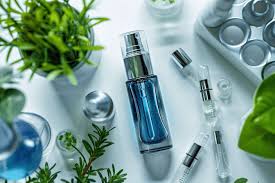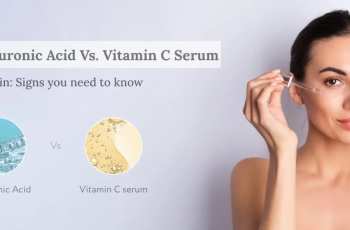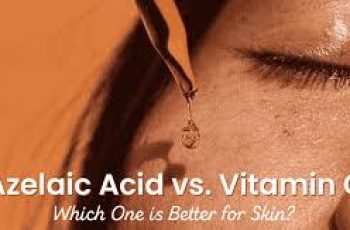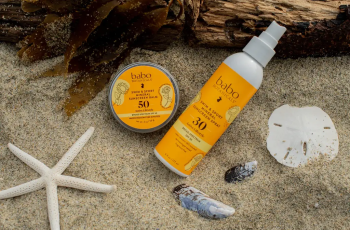.webp)
.webp)
.webp)
Can You Use Peptides and Retinol Together?
.webp)
.webp)
Some skincare ingredients are a match made in heaven—like strawberries and cream. Others require more thought and care. So where do peptides and retinol fit in? Can they work in harmony, or do they clash?
.webp)
.webp)
.webp)
If you’re building your skincare routine and wondering whether to pair these two powerhouse ingredients, keep reading.
.webp)
.webp)
We’ll walk you through how they work, how to use them, and why they might just become your new dream team.
.webp)
.webp)
.webp)
What Is Retinol?
.webp)
.webp)
Retinol is a derivative of vitamin A, and it’s widely considered one of the most powerful ingredients in the skincare world. It’s known for treating:
.webp)
.webp)
.webp)
Fine lines and wrinkles, Acne and breakouts, Uneven texture, Hyperpigmentation, Sun damage
.webp)
.webp)
Retinol works by speeding up cell turnover, which means it encourages dead skin cells to shed more quickly and makes way for new, healthy ones. This reveals smoother, brighter, and more even-toned skin.
.webp)
.webp)
.webp)
However, retinol is potent. It can cause dryness, flaking, and irritation, especially if overused or combined poorly with other actives.
.webp)
.webp)
What Are Peptides?
.webp)
.webp)
.webp)
Peptides are short chains of amino acids, which are the building blocks of proteins like collagen and elastin. These proteins are what keep your skin firm, smooth, and youthful.
.webp)
.webp)
When applied topically, peptides can:
.webp)
.webp)
.webp)
Stimulate collagen production, Improve skin firmness and elasticity, Strengthen the skin barrier, Smooth out fine lines, Provide antioxidant protection
.webp)
.webp)
Peptides are also cell-communicating ingredients. This means they send signals to your skin, essentially “telling” it to repair and regenerate more effectively.
.webp)
.webp)
.webp)
Can You Use Peptides and Retinol Together?
.webp)
.webp)
Yes, you can absolutely use peptides and retinol together. In fact, this pairing can be highly effective when used correctly.
.webp)
.webp)
.webp)
Here’s why they make a great team:
.webp)
.webp)
Retinol stimulates cell turnover, helping to fade dark spots and smooth skin
.webp)
.webp)
.webp)
Peptides reinforce and repair the skin barrier, helping reduce irritation from retinol
.webp)
.webp)
Together, they create a balanced approach to anti-aging and skin renewal
.webp)
.webp)
.webp)
Using them in tandem can give you better results while minimizing side effects—especially for those with normal to resilient skin.
.webp)
.webp)
How to Layer Peptides and Retinol
.webp)
.webp)
.webp)
When using both ingredients in the same routine, follow these simple layering rules:
.webp)
.webp)
Cleanse your skin
.webp)
.webp)
.webp)
Apply retinol (typically in serum or cream form)
.webp)
.webp)
Follow with a moisturizer that contains peptides
.webp)
.webp)
.webp)
The peptides in your moisturizer will help buffer the drying effects of retinol. They also support collagen production and calm the skin.
.webp)
.webp)
If your peptides come in a serum form, wait 10–15 minutes after applying retinol to avoid dilution and irritation. Then layer the peptide serum, followed by your moisturizer.
.webp)
.webp)
.webp)
Morning vs Evening Use: Which Is Best?
.webp)
.webp)
Retinol is photosensitive, meaning it breaks down in sunlight and can make your skin more vulnerable to UV rays. For this reason, it should always be used at night.
.webp)
.webp)
.webp)
Peptides, on the other hand, are safe and beneficial both day and night.
.webp)
.webp)
Here’s a smart way to divide them:
.webp)
.webp)
.webp)
Morning: Peptides + hydrating and protective ingredients
.webp)
.webp)
Evening: Retinol followed by a peptide-infused moisturizer
.webp)
.webp)
.webp)
This approach allows you to get the benefits of both ingredients without overwhelming your skin.
.webp)
.webp)
Should Peptides Go Before or After Retinol?
.webp)
.webp)
.webp)
If both ingredients are in separate products and you want to use them together in the same routine, apply retinol first. It needs to interact directly with the skin to work effectively.
.webp)
.webp)
Once the retinol has absorbed (usually 10–15 minutes), apply your peptide product to help restore moisture and soothe the skin.
.webp)
.webp)
.webp)
This order ensures the retinol is effective while peptides help repair and support the barrier that retinol may disrupt.
.webp)
.webp)
Are There Any Risks in Using Retinol and Peptides Together?
.webp)
.webp)
For most skin types, this combo is safe and beneficial. But if you have sensitive or dry skin, you may want to start slow:
Begin with retinol 2–3 nights per week
Use peptides daily to support skin recovery
Watch for signs of redness, irritation, or flaking
Apply a calming moisturizer after each use
Always patch-test new products and consult a dermatologist if you’re unsure how your skin will react.
What Should You Not Mix With Peptides?
Peptides are quite flexible and can be mixed with most skincare ingredients, including:
Retinol, Hyaluronic acid, Vitamin C (though some experts recommend separating use), Niacinamide, AHA/BHA (when used correctly)
That said, avoid using peptides with products that are too acidic, such as very low pH exfoliating acids. Extreme pH environments may reduce peptide effectiveness.
Stick with pH-balanced serums and moisturizers to get the most out of your peptides.
Are Peptides or Retinol Better?
There’s no single winner here—they target different concerns.
Retinol is best for fighting signs of aging, acne, and pigmentation.
Peptides focus on restoring the skin barrier and boosting hydration and elasticity.
If you’re new to actives, peptides are gentler and make a great entry point. If you’re focused on aging or breakouts, retinol can deliver more dramatic results—but should be used carefully.
Combining them offers a balanced, long-term solution for healthier, firmer, and brighter skin.
When Should You Use Peptides in Your Routine?
You can use peptides:
In the morning, after cleansing and before your SPF
In the evening, after using actives like retinol
As part of your recovery routine, after exfoliating or irritating treatments
They’re often found in serums, eye creams, or moisturizers. Apply them to clean, dry skin, followed by any additional hydrating or sealing products.
What Are the Key Benefits of Peptides?
Let’s break down the top reasons peptides are worth adding to your skincare routine.
1. Strengthens Skin Barrier
Peptides help the skin retain moisture and defend itself against environmental stressors like UV rays, pollution, and blue light.
2. Reduces Signs of Aging
By encouraging collagen production, peptides help firm the skin and reduce the appearance of fine lines and sagging.
3. Repairs Damaged Skin
Peptides assist in cellular communication, speeding up skin healing and repair from damage, breakouts, or irritation.
4. Offers Antioxidant Support
Peptides are loaded with antioxidants that neutralize free radicals and calm inflammation, making skin look and feel healthier.
Final Thoughts: Peptides and Retinol—Better Together
Using retinol and peptides together is not only safe but smart. When layered correctly, these ingredients can:
Reduce wrinkles and fine lines
Improve texture and elasticity
Brighten dull skin
Prevent irritation
Strengthen your skin over time
Start slow, build your tolerance, and let your skin adjust. Whether you’re new to skincare or a seasoned pro, this combo offers powerful anti-aging and barrier-strengthening benefits.
Still Have Questions?
If you’re unsure how to use peptides and retinol together—or want product recommendations—feel free to reach out. You can follow us on Instagram @Procoal and drop your questions in the DMs.
Our skincare experts are happy to help!

.webp)
.webp)
.webp) Can You Use Peptides and Retinol Together?
Can You Use Peptides and Retinol Together?
.webp)
.webp) Some skincare ingredients are a match made in heaven—like strawberries and cream. Others require more thought and care. So where do peptides and retinol fit in? Can they work in harmony, or do they clash?
Some skincare ingredients are a match made in heaven—like strawberries and cream. Others require more thought and care. So where do peptides and retinol fit in? Can they work in harmony, or do they clash?
.webp)
.webp)
.webp) If you’re building your skincare routine and wondering whether to pair these two powerhouse ingredients, keep reading.
If you’re building your skincare routine and wondering whether to pair these two powerhouse ingredients, keep reading.
.webp)
.webp) We’ll walk you through how they work, how to use them, and why they might just become your new dream team.
We’ll walk you through how they work, how to use them, and why they might just become your new dream team.
.webp)
.webp)
.webp) What Is Retinol?
What Is Retinol?
.webp)
.webp) Retinol is a derivative of vitamin A, and it’s widely considered one of the most powerful ingredients in the skincare world. It’s known for treating:
Retinol is a derivative of vitamin A, and it’s widely considered one of the most powerful ingredients in the skincare world. It’s known for treating:
.webp)
.webp)
.webp) Fine lines and wrinkles, Acne and breakouts, Uneven texture, Hyperpigmentation, Sun damage
Fine lines and wrinkles, Acne and breakouts, Uneven texture, Hyperpigmentation, Sun damage
.webp)
.webp) Retinol works by speeding up cell turnover, which means it encourages dead skin cells to shed more quickly and makes way for new, healthy ones. This reveals smoother, brighter, and more even-toned skin.
Retinol works by speeding up cell turnover, which means it encourages dead skin cells to shed more quickly and makes way for new, healthy ones. This reveals smoother, brighter, and more even-toned skin.
.webp)
.webp)
.webp) However, retinol is potent. It can cause dryness, flaking, and irritation, especially if overused or combined poorly with other actives.
However, retinol is potent. It can cause dryness, flaking, and irritation, especially if overused or combined poorly with other actives.
.webp)
.webp) What Are Peptides?
What Are Peptides?
.webp)
.webp)
.webp) Peptides are short chains of amino acids, which are the building blocks of proteins like collagen and elastin. These proteins are what keep your skin firm, smooth, and youthful.
Peptides are short chains of amino acids, which are the building blocks of proteins like collagen and elastin. These proteins are what keep your skin firm, smooth, and youthful.
.webp)
.webp) When applied topically, peptides can:
When applied topically, peptides can:
.webp)
.webp)
.webp) Stimulate collagen production, Improve skin firmness and elasticity, Strengthen the skin barrier, Smooth out fine lines, Provide antioxidant protection
Stimulate collagen production, Improve skin firmness and elasticity, Strengthen the skin barrier, Smooth out fine lines, Provide antioxidant protection
.webp)
.webp) Peptides are also cell-communicating ingredients. This means they send signals to your skin, essentially “telling” it to repair and regenerate more effectively.
Peptides are also cell-communicating ingredients. This means they send signals to your skin, essentially “telling” it to repair and regenerate more effectively.
.webp)
.webp)
.webp) Can You Use Peptides and Retinol Together?
Can You Use Peptides and Retinol Together?
.webp)
.webp) Yes, you can absolutely use peptides and retinol together. In fact, this pairing can be highly effective when used correctly.
Yes, you can absolutely use peptides and retinol together. In fact, this pairing can be highly effective when used correctly.
.webp)
.webp)
.webp) Here’s why they make a great team:
Here’s why they make a great team:
.webp)
.webp) Retinol stimulates cell turnover, helping to fade dark spots and smooth skin
Retinol stimulates cell turnover, helping to fade dark spots and smooth skin
.webp)
.webp)
.webp) Peptides reinforce and repair the skin barrier, helping reduce irritation from retinol
Peptides reinforce and repair the skin barrier, helping reduce irritation from retinol
.webp)
.webp) Together, they create a balanced approach to anti-aging and skin renewal
Together, they create a balanced approach to anti-aging and skin renewal
.webp)
.webp)
.webp) Using them in tandem can give you better results while minimizing side effects—especially for those with normal to resilient skin.
Using them in tandem can give you better results while minimizing side effects—especially for those with normal to resilient skin.
.webp)
.webp) How to Layer Peptides and Retinol
How to Layer Peptides and Retinol
.webp)
.webp)
.webp) When using both ingredients in the same routine, follow these simple layering rules:
When using both ingredients in the same routine, follow these simple layering rules:
.webp)
.webp) Cleanse your skin
Cleanse your skin
.webp)
.webp)
.webp) Apply retinol (typically in serum or cream form)
Apply retinol (typically in serum or cream form)
.webp)
.webp) Follow with a moisturizer that contains peptides
Follow with a moisturizer that contains peptides
.webp)
.webp)
.webp) The peptides in your moisturizer will help buffer the drying effects of retinol. They also support collagen production and calm the skin.
The peptides in your moisturizer will help buffer the drying effects of retinol. They also support collagen production and calm the skin.
.webp)
.webp) If your peptides come in a serum form, wait 10–15 minutes after applying retinol to avoid dilution and irritation. Then layer the peptide serum, followed by your moisturizer.
If your peptides come in a serum form, wait 10–15 minutes after applying retinol to avoid dilution and irritation. Then layer the peptide serum, followed by your moisturizer.
.webp)
.webp)
.webp) Morning vs Evening Use: Which Is Best?
Morning vs Evening Use: Which Is Best?
.webp)
.webp) Retinol is photosensitive, meaning it breaks down in sunlight and can make your skin more vulnerable to UV rays. For this reason, it should always be used at night.
Retinol is photosensitive, meaning it breaks down in sunlight and can make your skin more vulnerable to UV rays. For this reason, it should always be used at night.
.webp)
.webp)
.webp) Peptides, on the other hand, are safe and beneficial both day and night.
Peptides, on the other hand, are safe and beneficial both day and night.
.webp)
.webp) Here’s a smart way to divide them:
Here’s a smart way to divide them:
.webp)
.webp)
.webp) Morning: Peptides + hydrating and protective ingredients
Morning: Peptides + hydrating and protective ingredients
.webp)
.webp) Evening: Retinol followed by a peptide-infused moisturizer
Evening: Retinol followed by a peptide-infused moisturizer
.webp)
.webp)
.webp) This approach allows you to get the benefits of both ingredients without overwhelming your skin.
This approach allows you to get the benefits of both ingredients without overwhelming your skin.
.webp)
.webp) Should Peptides Go Before or After Retinol?
Should Peptides Go Before or After Retinol?
.webp)
.webp)
.webp) If both ingredients are in separate products and you want to use them together in the same routine, apply retinol first. It needs to interact directly with the skin to work effectively.
If both ingredients are in separate products and you want to use them together in the same routine, apply retinol first. It needs to interact directly with the skin to work effectively.
.webp)
.webp) Once the retinol has absorbed (usually 10–15 minutes), apply your peptide product to help restore moisture and soothe the skin.
Once the retinol has absorbed (usually 10–15 minutes), apply your peptide product to help restore moisture and soothe the skin.
.webp)
.webp)
.webp) This order ensures the retinol is effective while peptides help repair and support the barrier that retinol may disrupt.
This order ensures the retinol is effective while peptides help repair and support the barrier that retinol may disrupt.
.webp)
.webp) Are There Any Risks in Using Retinol and Peptides Together?
Are There Any Risks in Using Retinol and Peptides Together?
.webp)
.webp) For most skin types, this combo is safe and beneficial. But if you have sensitive or dry skin, you may want to start slow:
Begin with retinol 2–3 nights per week
Use peptides daily to support skin recovery
Watch for signs of redness, irritation, or flaking
Apply a calming moisturizer after each use
Always patch-test new products and consult a dermatologist if you’re unsure how your skin will react.
What Should You Not Mix With Peptides?
Peptides are quite flexible and can be mixed with most skincare ingredients, including:
Retinol, Hyaluronic acid, Vitamin C (though some experts recommend separating use), Niacinamide, AHA/BHA (when used correctly)
That said, avoid using peptides with products that are too acidic, such as very low pH exfoliating acids. Extreme pH environments may reduce peptide effectiveness.
Stick with pH-balanced serums and moisturizers to get the most out of your peptides.
Are Peptides or Retinol Better?
There’s no single winner here—they target different concerns.
Retinol is best for fighting signs of aging, acne, and pigmentation.
Peptides focus on restoring the skin barrier and boosting hydration and elasticity.
If you’re new to actives, peptides are gentler and make a great entry point. If you’re focused on aging or breakouts, retinol can deliver more dramatic results—but should be used carefully.
Combining them offers a balanced, long-term solution for healthier, firmer, and brighter skin.
When Should You Use Peptides in Your Routine?
You can use peptides:
In the morning, after cleansing and before your SPF
In the evening, after using actives like retinol
As part of your recovery routine, after exfoliating or irritating treatments
They’re often found in serums, eye creams, or moisturizers. Apply them to clean, dry skin, followed by any additional hydrating or sealing products.
What Are the Key Benefits of Peptides?
Let’s break down the top reasons peptides are worth adding to your skincare routine.
1. Strengthens Skin Barrier
Peptides help the skin retain moisture and defend itself against environmental stressors like UV rays, pollution, and blue light.
2. Reduces Signs of Aging
By encouraging collagen production, peptides help firm the skin and reduce the appearance of fine lines and sagging.
3. Repairs Damaged Skin
Peptides assist in cellular communication, speeding up skin healing and repair from damage, breakouts, or irritation.
4. Offers Antioxidant Support
Peptides are loaded with antioxidants that neutralize free radicals and calm inflammation, making skin look and feel healthier.
Final Thoughts: Peptides and Retinol—Better Together
Using retinol and peptides together is not only safe but smart. When layered correctly, these ingredients can:
Reduce wrinkles and fine lines
Improve texture and elasticity
Brighten dull skin
Prevent irritation
Strengthen your skin over time
Start slow, build your tolerance, and let your skin adjust. Whether you’re new to skincare or a seasoned pro, this combo offers powerful anti-aging and barrier-strengthening benefits.
Still Have Questions?
If you’re unsure how to use peptides and retinol together—or want product recommendations—feel free to reach out. You can follow us on Instagram @Procoal and drop your questions in the DMs.
Our skincare experts are happy to help!
For most skin types, this combo is safe and beneficial. But if you have sensitive or dry skin, you may want to start slow:
Begin with retinol 2–3 nights per week
Use peptides daily to support skin recovery
Watch for signs of redness, irritation, or flaking
Apply a calming moisturizer after each use
Always patch-test new products and consult a dermatologist if you’re unsure how your skin will react.
What Should You Not Mix With Peptides?
Peptides are quite flexible and can be mixed with most skincare ingredients, including:
Retinol, Hyaluronic acid, Vitamin C (though some experts recommend separating use), Niacinamide, AHA/BHA (when used correctly)
That said, avoid using peptides with products that are too acidic, such as very low pH exfoliating acids. Extreme pH environments may reduce peptide effectiveness.
Stick with pH-balanced serums and moisturizers to get the most out of your peptides.
Are Peptides or Retinol Better?
There’s no single winner here—they target different concerns.
Retinol is best for fighting signs of aging, acne, and pigmentation.
Peptides focus on restoring the skin barrier and boosting hydration and elasticity.
If you’re new to actives, peptides are gentler and make a great entry point. If you’re focused on aging or breakouts, retinol can deliver more dramatic results—but should be used carefully.
Combining them offers a balanced, long-term solution for healthier, firmer, and brighter skin.
When Should You Use Peptides in Your Routine?
You can use peptides:
In the morning, after cleansing and before your SPF
In the evening, after using actives like retinol
As part of your recovery routine, after exfoliating or irritating treatments
They’re often found in serums, eye creams, or moisturizers. Apply them to clean, dry skin, followed by any additional hydrating or sealing products.
What Are the Key Benefits of Peptides?
Let’s break down the top reasons peptides are worth adding to your skincare routine.
1. Strengthens Skin Barrier
Peptides help the skin retain moisture and defend itself against environmental stressors like UV rays, pollution, and blue light.
2. Reduces Signs of Aging
By encouraging collagen production, peptides help firm the skin and reduce the appearance of fine lines and sagging.
3. Repairs Damaged Skin
Peptides assist in cellular communication, speeding up skin healing and repair from damage, breakouts, or irritation.
4. Offers Antioxidant Support
Peptides are loaded with antioxidants that neutralize free radicals and calm inflammation, making skin look and feel healthier.
Final Thoughts: Peptides and Retinol—Better Together
Using retinol and peptides together is not only safe but smart. When layered correctly, these ingredients can:
Reduce wrinkles and fine lines
Improve texture and elasticity
Brighten dull skin
Prevent irritation
Strengthen your skin over time
Start slow, build your tolerance, and let your skin adjust. Whether you’re new to skincare or a seasoned pro, this combo offers powerful anti-aging and barrier-strengthening benefits.
Still Have Questions?
If you’re unsure how to use peptides and retinol together—or want product recommendations—feel free to reach out. You can follow us on Instagram @Procoal and drop your questions in the DMs.
Our skincare experts are happy to help!



